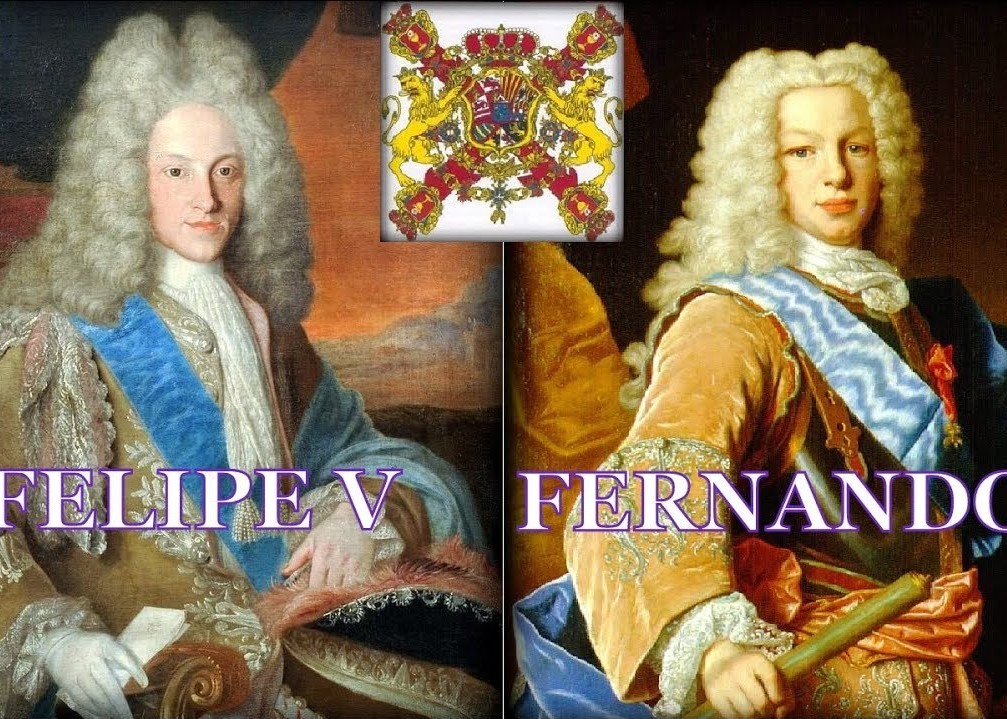To put things into a perspective man has to know about the past. From the Romans to the present day, Spain has played an important role in the progression of the Western World. InSpain.news gives a resume of the history of Spain based on several (scientific) sources. Part 14 talks about the Bourbons Philip V and Ferdinand VI. Read all previous parts here.
After being ruled by the Habsburgs for almost two centuries, Spain was ruled by Bourbons from 1700 to 1869: Philip V (1700-1746), Ferdinand VI (1746-59), Charles III (1759-88), Charles IV (1788- 1808) and Ferdinand VII (1808, 1814 -1833) and Isabella II (1833-1869). With some interruptions the Bourbons will remain in power to this day.
Philip V, the first Bourbon to rule Spain
The first Bourbon to rule Spain was Philip V, a grandson of the French “Sun King”, Louis XIV. Philip V had a sickly need for sex. He would spend many hours a day in his hobby and much less time on his duties as monarch. At court there was a coming and going of ladies who were at the service of the insatiable king. Medically, the king probably suffered from priapism, the erection for hours, often painfully. In addition, Philip V suffered from bipolar disorder in which he was plagued by delusions. For example, he had a frantic aversion to water and therefore hygiene left much to be desired. The fragrance that Philip spread was notorious among the ladies at his disposal and visiting foreign delegations.
A French envoy reported to his government that he was concerned about the health of the Spanish monarch, who appeared unhealthy and gaunt, probably as a result of many hours a day playing top sport. This physically and mentally unhealthy king never really wanted to be king and had no interest in state affairs. These were therefore looked after by his wife, Isabel Farnesio and dedicated officials.
Philip V
The first 14 years of the reign of Philip V (grandson of the French “Sun King” Louis XIV) were dominated by the War of the Spanish Succession. The Austrian Habsburgs did not accept the transfer of part of their family property to the Bourbons. From 1702 they were supported by England, the Netherlands and Portugal, who saw a union between France and Spain as a threat to the balance of power. Furthermore, the succession also led to division in Spain itself. Castile saw it as the best option for protecting overseas interests, but Aragon feared the same absolutism as in France and turned against Philip V. Spain fought back hard against the Allies. After Aragon and Valencia were placed under central rule, the Allies withdrew from Cataluña, which surrendered after a two-month siege.
Centralisation
At the treaty of Utrecht in 1713, Spain lost the remaining (Catholic, Spanish) part of the Netherlands (the southern part) to Austria. Gibraltar (and Menorca) was taken by the British. Large parts of the Italian possessions were also lost. As a result of this involuntary area reduction in Europe, Spain could now focus more on its overseas interests. In addition, after the military order of Aragon, Valencia and Cataluña, the unity of the homeland was enforced: by depriving them of competencies, the authority was centralized to Castilia, and certain obligations were imposed on Cataluña concerning the Spanish language.
Ferdinand VI and taxes
This centralisation also meant trying to get more tax money from the former kingdoms to Castile. Collecting tax money from these regions, however, remained a difficult matter. Under Ferdinand VI, the successor of Philip V, extensive research was done based on the land registry. This showed that if everyone (also the nobility and the clergy who owned large lands) paid tax, the tax burden could be significantly reduced. However, the tax-exempt elite opposed a tax reform so vehemently that Charles III later abandoned it.
In 1729 Philip V ordered the construction of the Plaza Mayor in Salamanca, according to many the most beautiful square in Spain.
Period of peace

Salamanca Plaza Mayor
Philip V had three sons who would eventually come to the Spanish throne. Louis, Ferdinand, and Charles. Louis died young, after which Ferdinand succeeded his father. Ferdinand VI was more of a diplomat, trying to resolve disputes with other European powers without arms. Therefore, his reign brought Spain a period of peace.
In addition, he revised the tax system and made the church liable for tax. He also strengthened the severely weakened Spanish fleet. At the time this was not a shadow of the English fleet. Furthermore, the army was heavily inferior to the French army. In 1758 his Portuguese wife Barbara of Bragança died. This left Ferdinand in a severe depression from which he could no longer escape. Ferdinand VI died in 1759.


